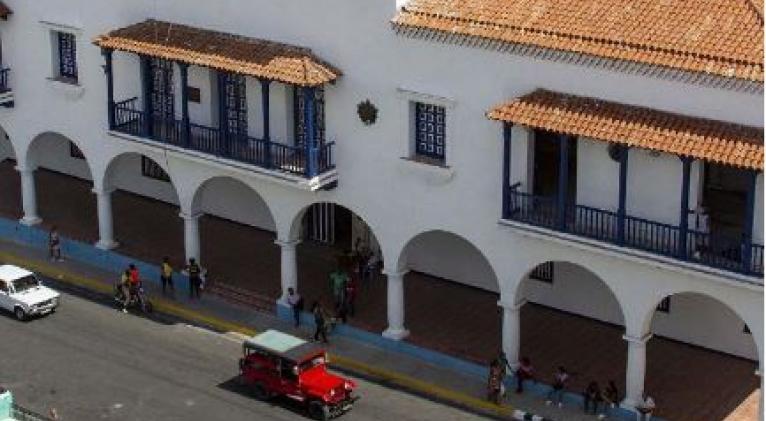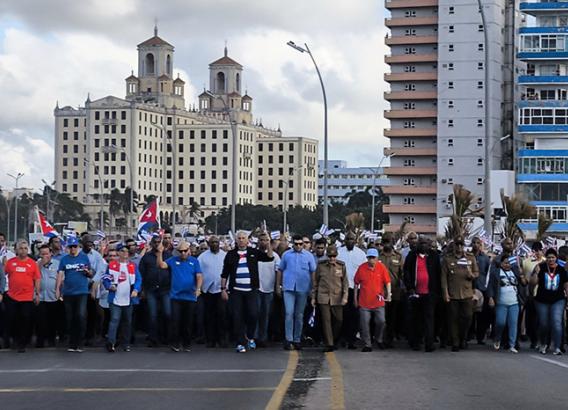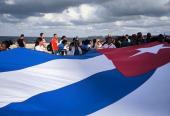Santiago de Cuba: 510 Years of History, Culture, and Pride
especiales

Nestled between sea and mountains, Santiago de Cuba is a city where the streets hold pages of the nation’s history, and every sound reveals the cultural richness that has distinguished it for 510 years as one of the most important urban centers in Cuba and the Caribbean.
Founded on July 25, 1515, by Diego Velázquez, Cuba’s seventh colonial town was uniquely positioned facing Hispaniola, the center of colonial power at the time, and blessed with a vast, secure bay. This allowed it to host the Spanish fleet, serve as the country’s first capital, and become a strategic base for continental conquest expeditions.
"Santiago’s history was Cuba’s history in the first half of the 16th century," Omar López, the city’s conservator, told the Cuban News Agency in an exclusive interview. He emphasized that since then, Santiago has stood as a witness to a legacy spanning centuries, one that defines the essence of the nation.
At the heart of the city lies its main square, now Céspedes Park, surrounded by landmarks such as the Casa de Diego Velázquez, considered the oldest surviving house in the Americas, and the Santa Basílica Metropolitana Iglesia Catedral, Cuba’s first cathedral. It is also home to the former City Hall, where Fidel Castro proclaimed the revolutionary triumph of January 1, 1959, to the world.
Strengthening its strategic role, Santiago soon became an economic hub, supported by the mineral wealth of Santiago del Prado (now El Cobre), and a coveted target for corsairs and pirates. This led to the creation of two administrative centers, one in Havana and another in Santiago, marking the birth of the country’s two major development poles, López noted.
In response to these threats, Cuba fortified its defenses, and engineer Juan Bautista Antonelli constructed the Castillo de San Pedro de la Roca, a masterpiece of Italian military engineering adapted to the Caribbean, now a UNESCO World Heritage Site.
Fueled by sugar and tobacco industries, the city continued its economic growth while expanding neighborhoods and parishes. The local church rose to archdiocese status, reinforcing the religious system.
The 19th century brought transformation with the arrival of French colonists after the Haitian Revolution, who introduced coffee cultivation, giving rise to the archaeological landscapes of coffee plantations, also recognized as a World Heritage Site.
"To visit Santiago is to encounter a productive culture that shaped unique ways of living, cultivating, and processing coffee," López said. He highlighted that the city was not only a cultural melting pot but also a focal point in the fight for freedom and, later, the triumph of the Rebel Army.
This is why the Santa Ifigenia Cemetery, inaugurated in the 19th century, became a national shrine, housing the remains of Carlos Manuel de Céspedes and Mariana Grajales, the Father and Mother of the Nation, respectively, as well as José Martí, Cuba’s national hero and intellectual architect of the Moncada Barracks attack—a symbol of the province—and Fidel Castro, the historic leader of the Revolution, among other key figures in Cuba’s independence struggle.
In this southeastern province, Spanish, African, French, and Asian roots converge, shaping the cheerful and hospitable spirit of its people. From this mix emerged traditions that define Santiago, reflected in its artistic expressions.
Here, the sacred works of Esteban Salas, the father of Cuban music, were born, along with trova, son, and bolero, genres that brought worldwide fame to Pepe Sánchez and the Trío Matamoros. Santiago is also the birthplace of the world’s finest light rum, a tradition preserved today in the "cathedral of Cuban rum."
The city is renowned for its congas, Tumba Francesa, and the iconic Carnival, the pinnacle of traditional popular culture.
"Santiago has much to celebrate but also much to protect to remain a unique and beautiful city," López said. "Marking 510 years means embracing its material and spiritual heritage with pride and responsibility."
The challenge, he noted, lies in fostering sustainable development that leverages cultural, historical, and natural assets, promoting responsible tourism, and advancing projects like the Center for the Interpretation of Cuban Music. It also involves strengthening emblematic spaces such as the Casa de la Trova, Casa del Son, Casa de José María Heredia, and the Vivac, the latter with a focus on university-level training in heritage conservation.
Santiago de Cuba, Hero City of the Republic, remains vibrant, rebellious, hospitable, heroic, and festive, just like its people. With its indomitable spirit, 510 years after its founding, it stands as a unique destination embodying the most authentic essence of Cuba.
Translated by Sergio A. Paneque Díaz / CubaSí Translation Staff














Add new comment